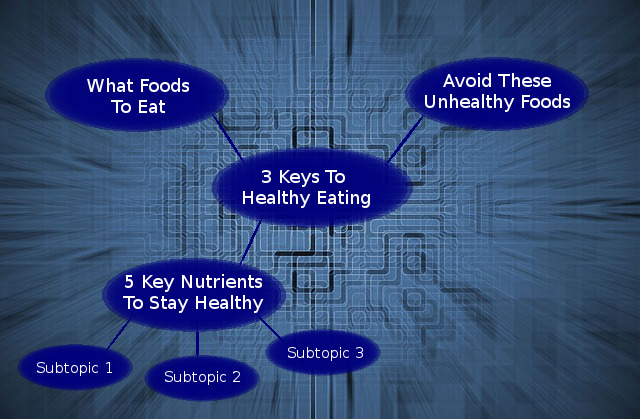Over the past few months Google’s been phasing in changes to their algorithm and how to get your site to the top rankings in searches. This is nothing new however, as all search engines make changes periodically to improve the accuracy and usefulness of their search results, after all, they’re in the business of delivering the best and most relevant search results to their users.
So let’s take a look at what’s important for 2018 as we begin the new year.
Topic Clusters Over Keyword Density
Traditionally, when you talk to an SEO, they’ll talk about how many times you repeat certain keywords (the terms people use in searches) which is what’s known in the business as “Keyword Density.” In the past, this was a key factor, as Google and other search engines would often establish relevance for a certain set of search keywords based on how many times they appeared in the text, headlines, etc.
While keywords are still important, the main key factor now is now so much how many times you can spam them out, but using them sparingly to set the topic, and then linking that page or article with other relevant pages or articles about the same topic, each covering a different aspect of it. This is what we call “Topic Clusters” in the SEO world.
Pillar (Parent) and Child Content
How this works is we start with a broad topic that covers the basics of a number of related topics so it’s wide but shallow in it’s coverage. This becomes the “Pillar” “Parent” content, which then links out over time to other pages or articles that cover specific points brought up in the “parent” article, which we can call “Child” articles. The parent would then have the point the child article expands on linked to the more detailed explanation in the “Child” article. The child articles can also link to the parent and to each other as well, forming a sort of web of related articles interconnected with each other.
The Topic Cluster
 These articles should not link outside their cluster however, except maybe in very specific and rare situations. One exception would be when linking to sources for a researched article. I consider it unethical to fail to give the people who invested so much effort into finding or researching that information.
These articles should not link outside their cluster however, except maybe in very specific and rare situations. One exception would be when linking to sources for a researched article. I consider it unethical to fail to give the people who invested so much effort into finding or researching that information.
Giving credit and linking to their work not only supports those who created the info you’re using, but also spreads goodwill to them and adds their credibility to your own, and shows your claims are backed by research and reputable sources can corroborate what you’re saying.
By grouping or clustering your contents in this way, you help the search engines more fully index your site, by giving them a trail of links to follow, all leading to pages about the same topics, which helps establish your relevance for those topics. Each time the search engine indexes any page (parent or any child) from a new cluster, it will follow the trail of links, eventually indexing the full cluster, and establishing your site’s relevance for that topic too.
Clusters Are User Friendly
Enough about machines and programs, the biggest benefit is it’s user friendly to organize your contents this way. When a person finds a page from one of your clusters, they can then easily find other pages talking about the same topic, allowing them to expand their knowledge and keeps them on your site for longer. The longer they stay, the more likely they will be to eventually buy something.
Content Strategy
Creating topic clusters is great, but there must be a strategy behind it, one that supports the goals of your website. For example, if you’re running an e-commerce website, then your goal would be to guide people to a product on your site that solves a problem your articles talk about. For a pure information site, such as a news site or blog, it may be to keep people reading more articles so they see more ads or affiliate offers and count on that a percentage of them will click an ad at some point.
 Value Is Key
Value Is Key
Whatever your goals are, the keystone behind your strategy has to be in adding high quality, valuable content that people want to read and benefit from reading. If all your content does is push products, then you’ll quickly lose your audience. If it provides value, with a gentle nudge towards products you offer that help solve the problem used sparingly, then you have the ability to grow a sizable following and that will boost your sales far more then being too “salesey” in your articles ever can.
There is also a myth around that seems to keep surfacing that you have to be releasing hordes of articles all the time, that you just need to keep pushing out more content, but this is just false. What you need is high quality content that says something new. If you keep repeating the same topics with nothing new to add, all you’re doing is burning yourself out and competing against yourself. You’re splitting your traffic to many different articles and that just drops you below the competition who is focusing on value added content ensuring each article covers something new.
When I say “something new” I don’t mean you have to say something nobody else has ever said before, or that you can’t revisit the same topic. What I mean by that is, make sure you have some new angle or nuance to bring up, a point you made in a past article that you now want to expand on more, for example.
An Example Of A Cluster
We’ve been talking a lot about Topic Clusters so let’s take a look at an example.
Let’s say you’re running a health and wellness blog, and you write an article about nutrition, called
“3 Keys To Healthy Eating.” This is a very broad topic and you touch on 3 key points in this article, good foods to eat, bad foods to avoid, and the benefits of 5 key nutrients.
This means you have 3 major topics that you could only briefly touch on in this article. So you now write 3 more articles to expand on each of those 3 points. You write more about healthy foods in one article called “What Foods To Eat,” about unhealthy foods in another called “Avoid These Unhealthy Foods,” and about the 5 key nutrients in the third, called “5 Key Nutrients To Stay Healthy.”
Each of these could do with expansion, you realize, but decide to start with writing an article about each of the 5 nutrients in more detail. This means you started with the Pillar article 3 Keys to Healthy Eating, which had 3 child articles including “5 Key Nutrients To Stay Healthy” which in turn became a Pillar article for 5 more child articles, each covering in detail 1 of the 5 “key nutrients” you talked about in your previous articles. The other 2 Child articles, “What Foods To Eat” and Avoid These Unhealthy Foods” could also become Pillar articles as you expand on the points you make in each of them, and the original pillar could end up with another child if you find a minor point you brought up in that article that you later realize you need to expand on.
How Do I Convert My Website?
Of Course, I have no doubt that question’s popped up by now, I had that same question as I was learning about these changes at a live presentation about this last fall.
There are a number of steps you can take to adapt your website to topic clusters, but it will take time, how much depends on how many articles you’ve published, and will therefore have to cluster. For some of them, you’ll likely find they’re natural child articles and you may need to write a new parent or Pillar article for them, others may cover broad topics and serve as a natural Pillar to other articles that talk about parts of that topic in more detail.
This though is a huge topic unto itself and is the perfect opportunity for me to put Topic Clusters into practice moving forward as a Child article to this. So be sure and subscribe to my email list so you can get notified of when I publish that follow up article! (There was an example of a good soft sell for you).
If you have any questions or ideas you want to share, feel free to leave a comment below. I do read them and love to hear from you, and your questions will help me help you by telling me what parts of this article you need me to expand upon and explain in more detail.
Thank you all for reading and I hope you have a wonderful day.




